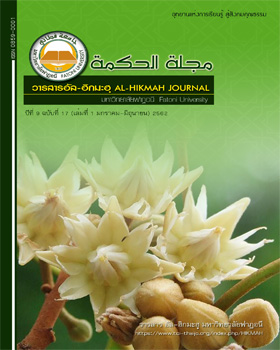An Analysis of innovative models suitable for behavior intention to use Internet banking for seniors
Keywords:
Diffusion of Innovation Theory, Trust, Behavioral Intention to Use, Internet banking for senior, Innovation for senior, Structural equation modelAbstract
The purpose of this research is to analyze the appropriate Internet banking for seniors by using diffusion of innovation theory and trust as mediator variables. Online questionnaires were collected from 213 Thai seniors’ people who had saving accounts with commercial banks in Thailand. The results of the Structural Equation Modeling (SEM) analysis indicated that diffusion of innovation does have a direct influence on trust and indirect influence on behavioral intention to use Internet banking. The results of this research significantly found that diffusion of innovation is a major factor in developing the Internet banking. It also increases trust in the service, which in turn affects the behavioral intention to use Internet banking services for seniors. Furthermore, the results of this research can be used as a model for executives in formulating relevant policies and strategies to achieve competitive advantages; and developing an efficient Internet banking system for seniors that is in accordance with the needs of seniors in everyday life.
References
Couto, J.P., Tiago, T. and Tiago, F. 2013. “An analysis of Internet Banking in Portugal: the antecedents of mobile banking adoption.” International Journal of Advanced Computer Science and Applications 4(11): 117-123.
Curran, P.J., West, S.G., and Finch, G.F. 1996. “The robustness of test statistics to nonnormality and specification error in confirmatory factor analysis.”
Psychological Methods (1): 16–29.
Hair, J.F., Black, W.C., Babin, B.J. and Anderson, R.E. 2010. “Multivariate Data Analysis: A Global Perspectives.” (7th ed) Pearson Prentice Hall, New York.
Im, I. , Hong, S. and Kang, M.S. 2011. “An international comparison of technology adoption: testing the UTAUT model.” Information and Management 48(1): 1-8.
Luo, X., Li, H., Zhang, J. and Shim, J. 2010. “Examining multi-dimensional trust and multi-faced risk in initial acceptance of emerging technologies: An empirical study of mobile banking services.”
Decision Support Systems 49: 222-234.
Mayer, R.C. and Davis, J.H. 1999. “The effect of the performance appraisal system on trust for management: A field quasi-experiment.” Journal of Applied Psychology 84: 123–136.
“Factors affecting adoption of online banking: A meta-analytic structural equation modeling study.” Information & Management 52(2): 210–226.
Rogers, E. (2003). Diffusion of Innovations, New York, Free Press.
Tabachnick, B. G. and Fidell, L. S. 2007. “Using Multivariate Statistics.” Boston: Pearson/Allyn & Bacon (5).
Xue, M., Hitt, L. M., & Chen, P. Y. 2011. “Determinants and outcomes of internet banking adoption.” Management Science 57(2): 291-307.
Yoon, S.H. and Steege, B. M. L. 2013. “Development of a quantitative model of the impact of customers’personality and perceptions on Internet banking use.” Computers in Human Behavior 29(3): 1133-1141
Zhao, L.A., Lewis, K.N., Lloyd, H.S. & Ward, P. (2010). Adoption of internet banking service in China: is it all about trust. International Journal of Information Management, 28, 7-26.



